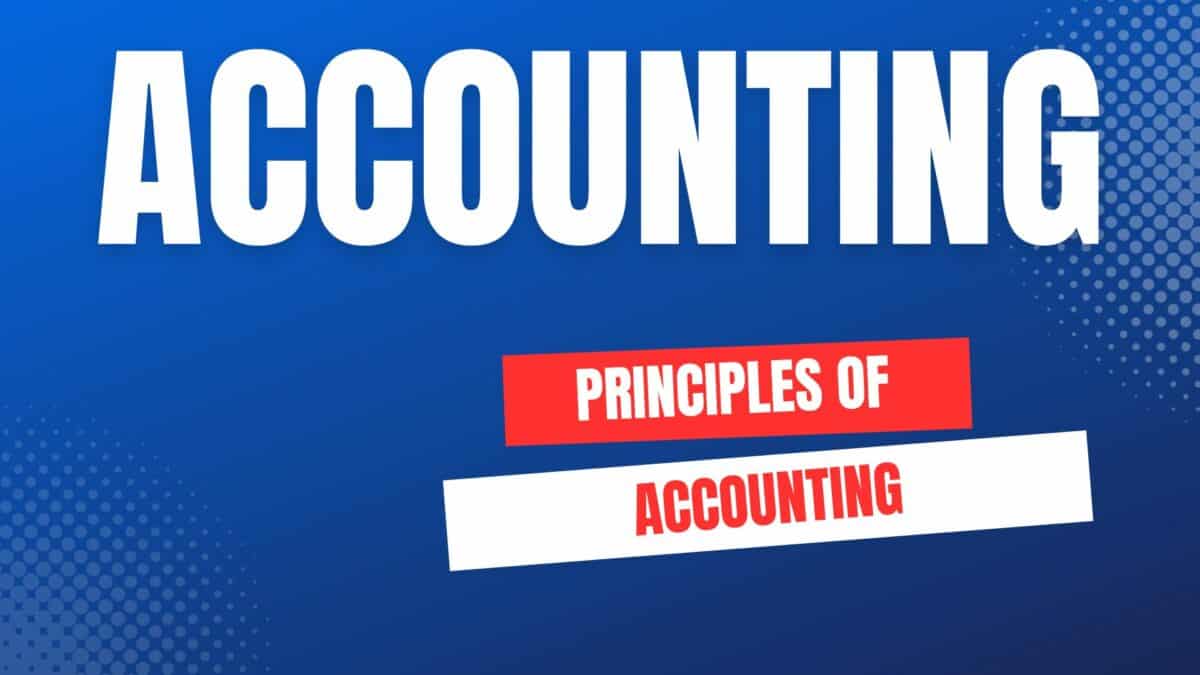This guide helps you learn principles of accounting. This is for students learning accounting and for anyone who wants to understand financial statements.
This guide shows all the topics in a principles of accounting textbook. It covers the accounting material from the following accounting courses:
- financial accounting
- managerial accounting
- principles of accounting 1
- principles of accounting 2
- survey of accounting
Contents
Why study accounting?
The Harvard Business School article, Why Learn Accounting? 6 Benefits, lists the following benefits from learning accounting:
1. Manage your finances more effectively
2. Understand current events
3. Make more meaningful contributions at work
4. Prepare for entrepreneurial success
5. Receive more advancement opportunities
6. Improve decision-making capabilities
For Intermediate Accounting content, see The Ultimate Guide to Learn Intermediate Accounting
1 Introduction to Accounting
What is accounting?
Accounting is the process of recording, analyzing, and summarizing financial transactions. Accounting uses the five types of accounts to record all the transactions.
In accounting, the five types of accounts are:
- assets: resources owned by a business; what the company owns
- liabilities: debts of the company; what the company owes
- equity: claim on the assets by the owners; calculated as equity = assets – liabilities; equity is the net worth of the company
- revenues: when a business receives assets from selling products and services
- expenses: when a business uses or consumes assets to create revenues
The goal of financial accounting, or financial reporting, is to issue financial statements.
There are four financial statements that each company prepares. The four financial statements are:
- income statement: revenues minus expenses equal net income or net loss
- balance sheet: lists all the assets, liabilities, and equity of a company
- cash flow statement: cash inflows and cash outflows
- statement of owners’ equity: shows the changes in equity on the balance sheet
Introduction to accounting
- Introduction to Accounting
- 10 Tips to Make an A in Accounting.
- Accounting Concepts
- Accounting Careers and Certifications
- Introduction to Accounting YouTube playlist
2 Recording Business Transactions
Recording journal entries
Recording transactions in accounting uses a system called debits and credits. You need to learn the accounts and how to make journal entries into the accounts.
To record business transactions, use the debit and credit rules. All the transactions are recorded in a journal. These are called journal entries.
A journal shows all the transactions for the accounting period. These entries are posted to the ledger, which contains all the account balances.
Recording business transactions
- Recording Business Transactions
- Debits and Credits Explained: A Helpful Illustrated Guide
- What is the Accounting Equation?
- Financial Statements: A Beginner’s Guide
- Recording Business Transactions YouTube playlist
3 Adjusting Entries and the Accounting Cycle
Adjusting entries are entries made at the end of the period to update the accounts.
Here are the steps in the accounting cycle:
- Analyze transactions
- Journal entries
- Post to the ledger
- Unadjusted trial balance
- Adjusting entries
- Adjusted trial balance
- Financial statements
- Closing entries
- Post-closing trial balance
The steps in the closing process are:
- Close revenue accounts
- Close expense accounts
- Close income summary
- Close dividends
Adjusting entries
- Adjusting Entries and the Accounting Cycle
- Adjusting Entries and the Accounting Cycle YouTube playlist
4 Accounting for Merchandising Activities
A service company sells a service to its customers. A merchandising company sells products. Accounting for merchandising companies that sell products is more complex than for service companies.
This lesson introduces companies that buy and sell inventory and the concept of cost of goods sold.
Cost of goods sold (COGS) is the cost of selling the products to customers. For most companies, the cost of goods sold is the largest expense on the income statement. The cost of goods sold is also called:
- cost of goods
- cost of sales
- cost of revenue
Merchandising operations
5 Inventory and Cost of Goods Sold
A merchandising company buys and sells inventory. Inventory is a current asset on the balance sheet.
Selling this inventory moves its cost to the cost of goods sold (COGS) on the income statement.
There are several inventory methods that determine cost of goods sold:
- specific identification
- first-in, first-out (FIFO)
- last-in, first-out (LIFO)
- weighted average
Inventory and cost of goods sold
6 Cash and Internal Control
This lesson focuses on three topics:
- cash and cash equivalents
- bank reconciliation
- fraud
- internal control
Cash includes coins, currency, demand deposits, and similar assets.
Cash equivalents include short-term liquid items that mature in three months or less. To be a cash equivalent, the investments must have a low risk of change in value.
A bank reconciliation serves as a verification tool. It ensures that the cash balances presented in a company’s books match the balances reported by the bank.
Fraud is knowing deception for financial gain. There are three infamous financial frauds in the 21st century:
- Enron
- WorldCom
- Bernie Madoff
Internal control is a system in accounting and auditing to protect assets and financial records. It is required to comply with legal requirements and improve the company efficiency.
Cash, fraud, and internal control
7 Accounting for Receivables
Receivables are promises to pay from another entity. Receivables are assets on the balance sheet. There are several types of receivables:
- accounts receivable
- notes receivable
- interest receivable
Accounts receivable should be recorded at the amount the company expects to collect. This amount is called the net realizable value.
For example, if the accounts receivable balance is $50,000 but the company expects that $1,000 will not be paid, the net realizable value is $49,000. The $1,000 represents bad debts or uncollectible accounts.
There are two methods to account for bad debts:
1. Allowance method
2. Direct write-off method
Receivables
8 Accounting for Long-Term Assets
Long-term assets include:
- plant assets
- intangible assets
- natural resources
Depreciation is the allocation of the cost of a plant asset over its useful life. There are three popular depreciation methods:
- straight line depreciation
- units of production depreciation
- double declining balance depreciation
Long term assets
- Accounting for Long Term Assets
- Accounting for Long Term Assets playlist
9 Accounting for Current Liabilities
Current liabilities are debts that are due in one year or less.
Current liabilities
10 Accounting for Long-Term Liabilities
Long-term liabilities are debts that are due in more than one year.
Long term liabilities
11 Corporations
Accounting for corporations include the following topics:
- capital stock
- dividends
- retained earnings
Corporations
12 Statement of Cash Flows
Accounting for cash flows shows the cash flow statement.
Cash flow statement
13 Financial Statement Analysis
Financial statement analysis is using financial information to examine trends and financial ratios for a company.
14 Managerial Accounting
15 Job Order Costing
16 Process Costing
17 Activity Based Costing
18 Cost Volume Profit Analysis
19 Variable Costing
20 Master Budgets
21 Flexible Budgets and Standard Costs
22 Performance Measurement
23 Relevant Costing
24 Capital Budgeting
25 Time Value of Money
The time value of money is a foundational concept in finance. There are two ways to calculate time value of money:
- simple interest
- compound interest
Simple interest pays interest only on the principal, not on the accrued interest. It is the easiest interest to calculate.
The simple interest formula is Interest = Principal x Rate x Time, or I = PRT.
Compound interest pays interest on both principal and accrued interest.
Time value of money includes several formulas using compound interest:
- future value formula
- present value formula
- future value of an annuity formula
- present value of an annuity formula
- future value of an annuity due formula
- present value of an annuity due formula
These time value of money formulas use the following variables to calculate the TVM problems:
- FV: future value is a lump sum at a future date
- PV: present value is a lump sum at the current date
- r: periodic rate of return; some formulas use i for interest instead of r
- PMT: payment is an annuity or a stream of equal payments (+ or -) at equal intervals
- N: number of periods; number of years times the periods per year
Time value of money

Jeff Mankin teaches financial literacy and Excel. He is the founder of Finally Learn.



